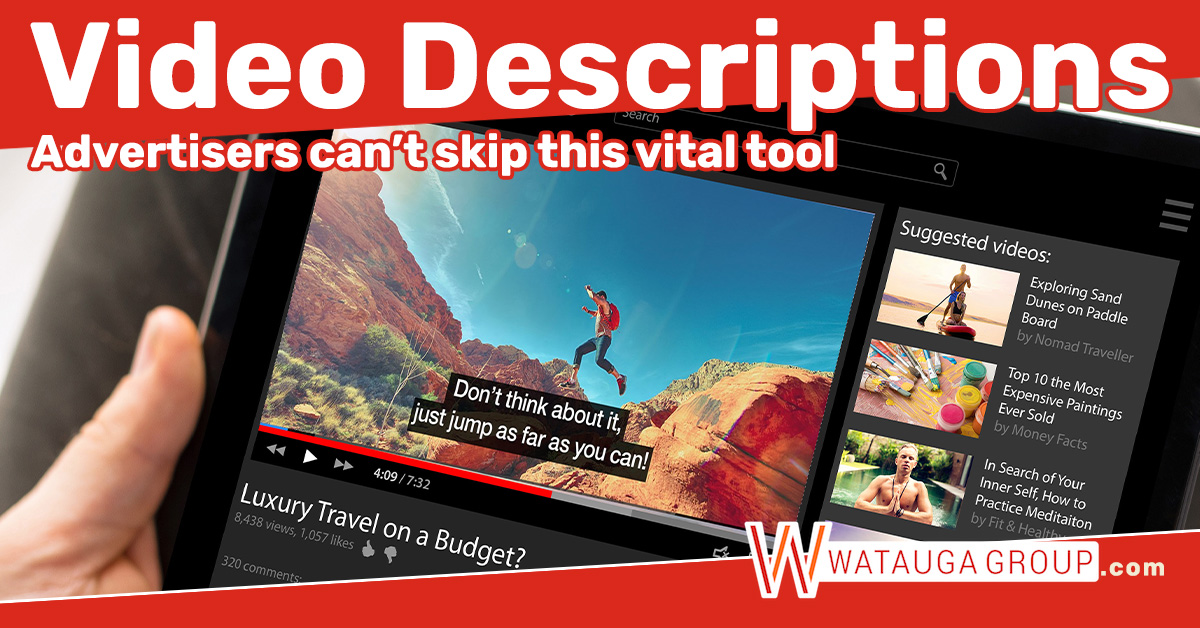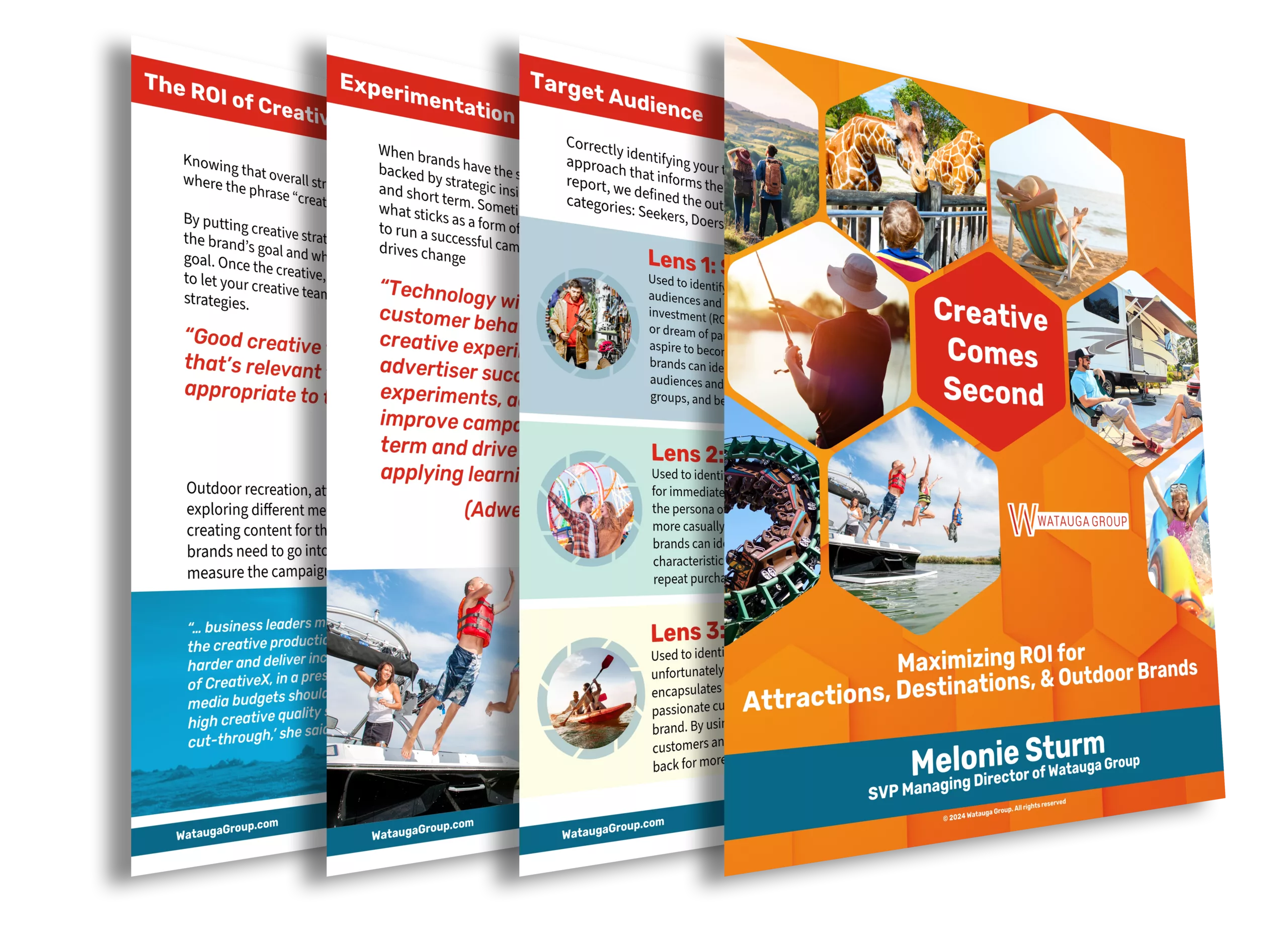People often think of accessibility in terms of physical limitations. Limitations in everyday life, in an outdoor and recreational space, or in work, however, accessibility goes beyond physical limitations. In our media-filled world, accessibility is a key aspect of giving equal opportunities to all individuals. Audio Description, also known as Video Description, plays a key role in providing people who are blind or have low vision with equal access to television, recorded video, and film programming. By offering vivid and concise descriptions of visual elements during pauses in dialogue, audio descriptions enable visually impaired individuals to paint a picture in their minds to enhance their overall media experience.
How it works
Audio-described ads are the same as regular commercials – the only difference is in the audio track. While the original audio plays at a slightly lower level, a narrator will describe the action, movements, and characters that are not communicated through sounds and speech. This added layer of description will turn an unengaging experience for visually impaired individuals into something that helps them to feel connected to the media. It allows everyone to fully experience the advertisement.
Needs of Audio Descriptions
Making an audio-described ad has a few unique requirements. Audio described TV spots need clear and concise summaries of each shot and storyline within a limited time frame. The challenge is being able to deliver a comprehensive description while avoiding disruptions to the original dialogue. There needs to be a balance between providing essential information and blending their descriptions with the existing audio. This will enhance the overall viewing experience for individuals with visual impairments.
Types of Audio Descriptions
There are two types of audio descriptions to play on a media file: standard audio description, known as 508AA, and extended audio description, known as 508AAA. Standard audio description only has meaningful context described over audio. There needs to be a 3-second gap in the audio file to overlay audio that describes the meaningful context. Extended audio description has a full narration of the media. The original file will play but will add pauses to narrate what has transpired in the last few seconds, continuing through the length of the video. These pauses can extend a 30-second video into two minutes. Both audio description types can be created through vendors who specialize in closed-captioning, subtitling, and audio descriptions. The only requirement is the original media file and from there, vendors can create the audio-description media.
Subaru has a great example of a 508AA or Standard Audio Description in its commercial. It is a one-minute-long video that describes what is happening over the original audio track. The gaps in the original audio file are long enough to allow seamless narration of the video.
Bridging the Gap with Audio Described Ads
The importance of audio descriptions goes beyond advertising. Organizations like the National Federation of the Blind advocate for audio descriptions to provide access to information that may not be voiced in various media formats. By incorporating detailed descriptions of visual elements, audio descriptions empower visually impaired individuals to access and comprehend content fully. This access to vital information fosters inclusivity.
What is alt text and how is it different than audio descriptions?
Alt text is a tool for describing images on the internet, audio descriptions specifically describe videos. Alt text is used for static images, whereas audio descriptions enrich the audiovisual experience and provide an understanding of the video content for people who are visually impaired. Unfortunately, it is still difficult to implement audio-described commercials. Networks often switch off the necessary infrastructure during ad breaks, which interrupts the broadcast of audio descriptions and limits accessibility for visually impaired viewers.
Platform Barriers
Major digital platforms present different levels of support for audio descriptions. For example, YouTube does not have built-in audio description capabilities. The platform requires alternative solutions such as hiring third parties to provide audio descriptions. Facebook and Instagram offer limited functionality or require the creation of an entire audio-descripted version of creative. However, Over-the-Top (OTT) platforms provide a more accessible landscape allowing users to activate the audio description track alongside the original audio. Some of the newer generation TVs have audio description capabilities. If this capability is turned on and media files do include an audio description, the TV will recognize that it needs to play the audio-descripted file.
Advancing Accessibility for the Future
Audio descriptions in advertising will promote accessibility and inclusivity for people with visual impairments. By providing detailed descriptions of visual elements, audio-described ads enable visually impaired individuals to actively participate in the media landscape. Overcoming limitations and expanding support for audio descriptions on digital platforms is important when working toward equal access for all. By working with advertisers, content creators, and platforms, we can create a more inclusive future.
What can we do to make a more inclusive space now?
Unfortunately, because audio described videos have many nuances to produce them, it makes it difficult for advertisers to be inclusive within their ads. However, there are other ways for brands to be more inclusive. Brands can start with their organic media. Instagram has capabilities that allow users to enter alt text for images and captions for videos in organic social posts. See below for instructions:
- Images to add Alt Text – When creating a new post with an image, select the image you would like to post, click next, under the “new post” screen where you write captions, click the “advanced settings” button, under accessibility, click “write alt text”.
- This will help anyone with visual impairments
- Videos to write captions – When creating a new post with a video, select the video you would like to post, click next, under the “new post” screen where you write captions, click the “advanced settings” button, select “show captions”
- This will help anyone with hearing impairments






